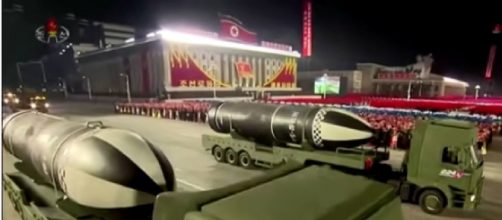From all external appearances, it seems North Korea wants to send a message to the world at large. The country is probably reactivating its nuclear facilities. The 5-megawatt Yongbyon reactor is its biggest nuclear reactor. It is back in business after lying dormant for two years. That is what the International Atomic Energy Agency IAEA reveals. It describes the development as "a cause for serious concern." Pyongyang had put on hold its nuclear activities while Kim Jong-un and Donald Trump discussed denuclearization. The two leaders met in Singapore, Hanoi and at the demilitarized zone in the North.
However, they could not arrive at an acceptable formula because of differences in priorities.
The IAEA interprets the actions of the North as "a clear violation of relevant U.N. Security Council resolutions and is deeply regrettable." Incidentally, Pyongyang test-fired a couple of missiles in March. That was just before Joe Biden took over as president. In January 2020, North Korea distanced itself from nuclear talks with the United States.
Message from North Korea on nuclear activities
Right now, the North feels it has lost relevance to the United States. This could be because it does not find itself featuring in press briefings of the White House. Coronavirus heads the agenda of the Biden administration, followed by the rapidly changing scenario in Afghanistan.
President Joe Biden initially indicated North Korea as his top foreign policy challenge. In March, he went to the extent of saying: "There will be responses if they choose to escalate. We will respond accordingly." He did not rule out diplomatic efforts, provided the result would be denuclearization. When the Biden administration tried to contact North Korea in March, it played hard to get. At present, the ground realities paint a different picture. The hermit kingdom appears to be engaged in sprucing up its Yongbyon nuclear power plant.
North Korea slowed down testing of nuclear devices
The IAEA report mentions about slowing down of reactor operations by Pyongyang in recent times. That was between late 2018 to the middle of July 2021.
However, since then, there are visible signs of activity related to the operation of the Yongbyon reactor. This setup has the potential to enrich both uranium and plutonium to weapons-grade purity. The reactor generates power but can produce weapons-grade plutonium required to build warheads. The North is a highly secretive state and the media has limited access to information. Hence, the IAEA has to depend on sources like satellite imagery.
Challenges ahead for the U.S. with a nuclear-armed North Korea
The IAEA expressed concerns over the possible reactivation of a nuclear power plant in North Korea. The agency reveals signs of renewed activities at the venue. The Foreign Ministry of South Korea keeps track of its neighbour's nuclear and missile activities in close cooperation with the United States.
Jeffrey Lewis is a weapons expert and professor. In his opinion, these are reminders of the challenges ahead for the United States concerning a nuclear-armed North Korea. During negotiations between Kim Jong-un and former U.S. President Donald Trump in Hanoi in 2019, the North had offered to dismantle the Yongbyon complex in exchange for sanctions relief. The North was under sanctions due to its nuclear programs that could pose a threat in the region. The sanctions hurt its economy. However, the discussions did not produce any positive results. The priority for Trump was denuclearization, while Kim's priority was relief from sanctions. It was a clash of interests.


